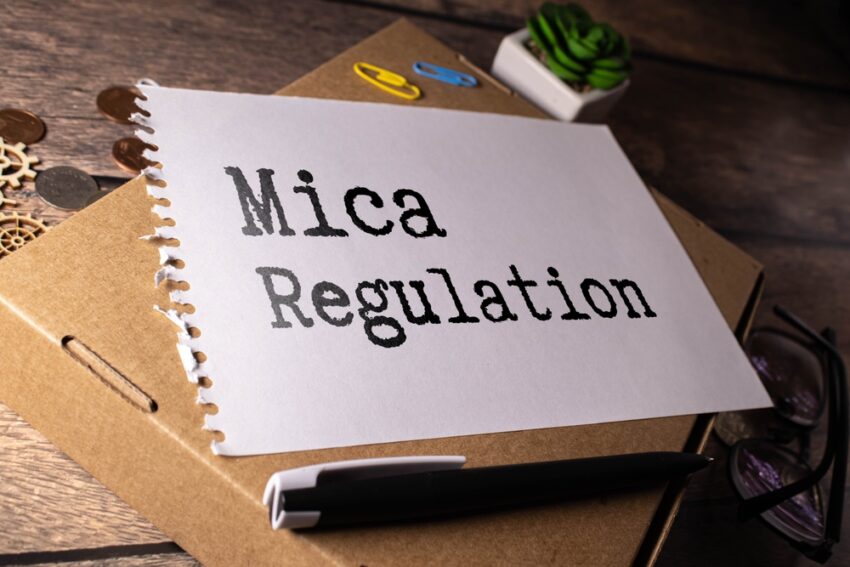Is MiCA Important?
The need for MiCA was necessitated by three factors. They include:
Investor protection: Crypto’s fame led to an increase in scams and fraud. MiCA unveils strict transparency guidelines, necessitating crypto issuers to reveal risks vividly, which ensures adequate information prior to investing.
Regulatory consistency: Before MiCA, confusion and inconsistency were prevalent due to the absence of a regulatory structure. A level playing field is established by this regulation, improving cross-border business while enhancing consumer safeguards.
Financial stability: The unregulated crypto market was a threat to the financial system’s solidity. MiCA addresses this by establishing regulations to avert market manipulation and ensure responsible innovation.
MiCA Regulation Timeline
MiCA entails seven primary titles that cover various elements, as explained in the sections below:
MiCA Title I
It establishes the guidelines for platforms that trade and offer publicly available crypto assets. In this case, it highlights the requirements to be met by the platforms to ensure legal operation within the European Union (EU).
It covers three points, including:
Explaining the regulation’s target.
Establishing the requirements for the platforms as well as the associated entities.
Offering definitions of important terms such as utility tokens, crypto-asset services, and consensus mechanisms.
MiCA Title II
It explains the stipulations for entities seeking to develop and publicly offer a crypto asset. Some key conditions must be met by an entity seeking to offer a crypto asset that is not an asset-referenced or e-money token.
The criteria include:
A comprehensive white paper that explains the crypto’s purpose, risks, and technology.
An entity established under an EU member state’s guidelines.
Publishing marketing materials that correctly represent the crypto asset and how it will be utilized.
Alerting the relevant authorities concerning the planned offering.
Following other specific requirements for offering crypto assets.
MiCA III
It focuses on asset-referenced tokens (ARTs) that seek to stabilize their value via collateral such as commodities, fiat currencies, and crypto assets. An entity can only issue an ART such as EcoCoin if it is a lawfully recognized institution.
Issuers also need to offer vivid information concerning the assets backing the token and the strategies utilized to ensure stability.
MiCA Title IV
It establishes the guidelines for offering e-money tokens (EMTs) that aim to ensure a stable value. Entities should be approved as electronic money institutions or credit institutions.
Prior to making public offerings, users must alter the appropriate authorities at least 40 working days before. Besides, Title IV bans trading e-money tokens that contain built-in anonymization elements.
MiCA Title V
It outlines the entities approved to offer crypto asset services in the EU and their scope. Examples of institutions covered include:
Investment companies
Market operators
Credit institutions
Electronic money institutions
Alternative investment fund managers
The title simplifies cross-border service provision within the European Union. It also incorporates crucial guidelines for service providers, needing them to meet exclusive obligations towards clients.
MiCA Title VI
The title focuses on addressing market abuse in crypto. It entails facilitating fair trading by averting practices such as market manipulation and insider trading.
The title exclusively covers:
- Illegal disclosure of inside information
- Insider trading
- Market manipulation
MiCA Title VII
It focuses on how EU regulators must cooperate to govern the crypto asset market. It covers the following elements:
- Cross-border cooperation
- Enforcement powers
- Consistent information sharing
- National Competent Authorities (NCAs)
- Standardized procedures.
MiCA Exclusions
The main exclusions entail.
- Assets categorized as funds
- Assets that meet the definition of a structured deposit
- Life and non-life insurance policies
- Some public transactions
- Central bank digital currencies (CBDCs)
- Social security schemes and pension products
- Tokens falling under securitization positions
- Non-transferable digital assets
- Crypto assets that quality as financial instruments under other European Union guidelines
The Path Ahead
MiCA’s provision will be fully executed by next year. As the guidelines establish a basis, nations such as Singapore, the US, and the United Arab Emirates might utilize it as a structure to develop more vivid guidelines on market integrity, crypto assets, and customer protection.

